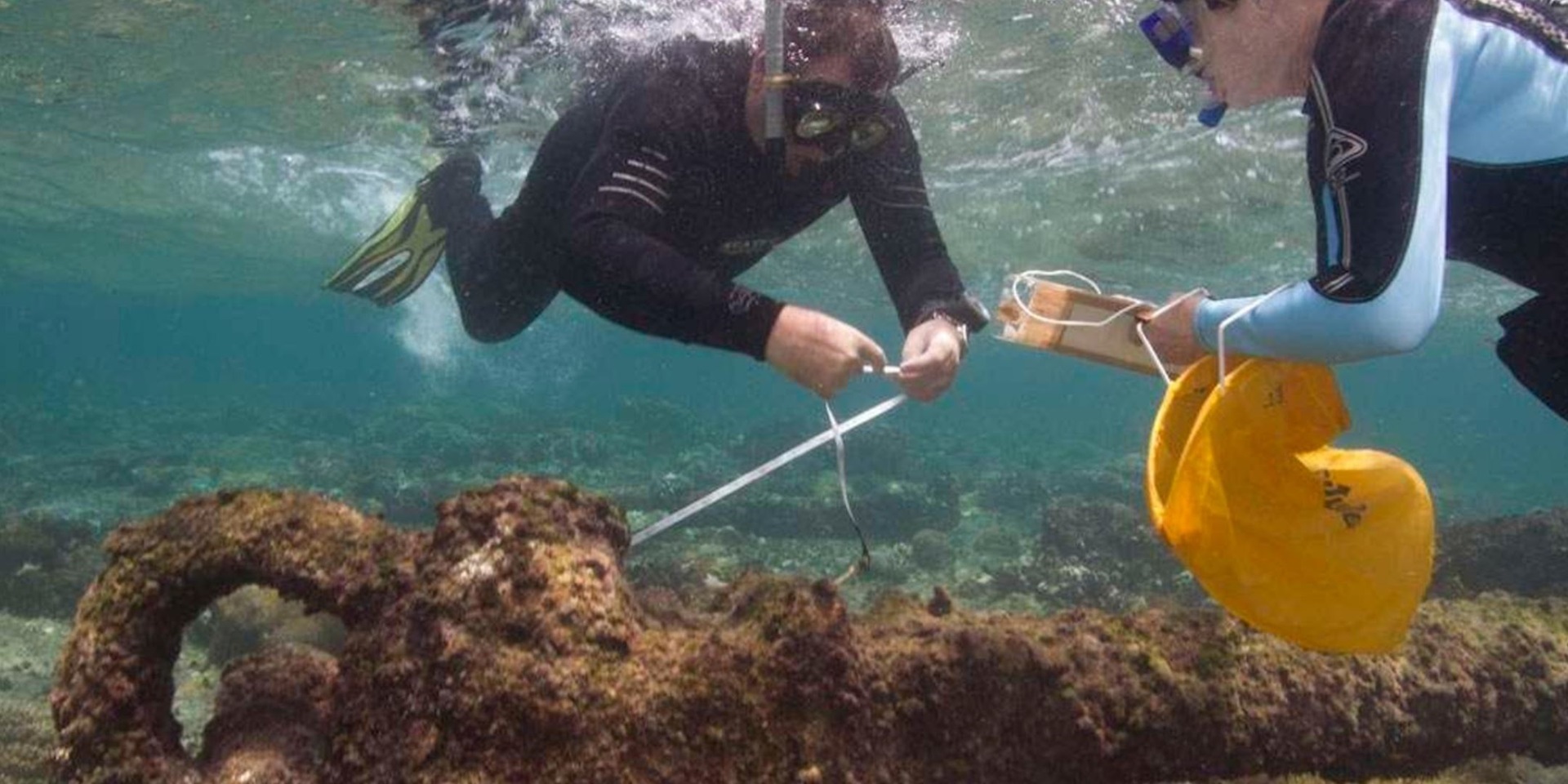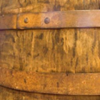

Shipwrecks and maritime archaeology are key parts of understanding Australian’s history as a land that is gurt by sea. Image: Measuring artefacts in situ, during an archaeological dive on the Great Barrier Reef, 2013 / ANMM.
Over the past six months, Em Blamey, Creative Producer at the museum, and I have travelled Australia engaging regional and remote maritime museums with the exhibition project Submerged: Stories of Australia’s shipwrecks. In late September, we were honoured to attend the 2017 AIMA Conference: Claimed by the Sea, to present the results of our endeavours.
Creating Submerged with the maritime community

Em Blamey, Creative Producer at the museum, hard at work during a conference break. Image: Emily Jateff / ANMM.
First, a brief background on Submerged: In 2015, the museum produced the travelling banner exhibition War at sea: the Navy in WWI with the support of RSL Queensland. The banners were shipped, free of charge, to various venues across Australia, enabling them to engage in stories of national significance without having to deal with the environmental concerns that come with shipping and showcasing objects. It has been a roaring success, with over 150 venues visited so far.

Submerged logo. Image: ANMM.
Based on this success, the museum partnered with the Australian Maritime Museums Council (AMMC) to produce a banner exhibition on shipwrecks.The topic was chosen because, well, everyone loves shipwrecks. Thanks to Visions of Australia – Development funding, the museum and AMMC presented a series of series of workshops across Australia. At the workshops, we invited regional and remote maritime museums to participate in the project by producing content for the display. As Em Blamey says, this is the largest exhibition development team ever!

Partners, from across Australia, working on the concepts for Submerged, in an exhibition workshop held in Hobart, March 2017. Image: ANMM.
At the workshops, attendees were introduced to the project parameters, given instruction in how to write content for exhibitions, and met with local archaeologists and conservators. While objects won’t travel with Submerged, we encourage venues to display their own shipwreck objects. Feedback has been wonderful, with over 195 individuals from 88 organisations represented.
Following the workshops, organisations submitted their ‘shipwreck stories’ via the AMMC website for AMMC membership review. The top stories were voted on and those results forwarded to a joint museum/AMMC Final Review panel, who selected the stories for the travelling exhibition, ensuring to include a range of locations, ages and types or shipwrecks. It is currently in production and will hit the road in early 2018. Stay tuned for more details on Submerged to be presented in a feature story later this year.
Claimed by the sea: The many stories of maritime archaeology in Australia
The Australasian Institute for Maritime Archaeology (AIMA) holds an annual conference. This year, it was hosted by Flinders University Department of Archaeology and took place in Adelaide on 22-23 September. It was a beautiful weekend in South Australia. A warm 21 degrees with sunny skies and the tables were laden with delicious South Australian food and drink – no surprise that more than 62 papers and presentations were scheduled for this event, with attendees from all states/territories and a strong contingent from Southeast Asia.

Adam Paterson, Curator at the South Australian Maritime Museum shows us the frame for a woven whale created by Australian and international Indigenous communities for the exhibition Leviathan. Image: Emily Jateff / ANMM.
Em and I presented in the first session, Collecting the Sea: Maritime Collections and their Exhibition, chaired by Britt Burton, History Trust of SA. Presentations covered the various ways in which maritime archaeology can be presented in museums, including a fantastic talk by University of Sydney PhD Candidate, Natali Pearson on the ethics behind the presentation of commercially salvaged collections. One of my favourites was by Adam Paterson, Curator at the SA Maritime Museum. Adam covered approaches to collecting and interpretation, with a focus on recent collaborations with South Australian Indigenous groups towards the development of the whaling exhibition Leviathan.
The keynote lecture was given by Australian National Maritime Museum collaborator, Sarah Kenderdine, now with the École polytechnique fédérale de Lausanne, Switzerland. Sarah works on the cutting edge of experimental museography and wowed the crowd with a representation of 3D visualisation as a means of mapping cultural sites and preservation of intangible cultural heritage. One of this outputs, the 360-degree 3D environment ‘Atlas of Maritime Buddhism’ will hopefully be coming to the museum in the near future.
AIMA also sponsors an annual scholarship for maritime archaeological research projects, the winner of which is announced each year at the conference. This year’s winner is Abhirada Komoot for her project Influences of Early Shipbuilding Technology of the Western Indian Ocean in Southeast Asia: a study on the (sewn) construction of the Phanom-Surin shipwreck in Thailand. Ms. Komoot will receive $2000 AUD to complete her research. Congratulations!
Nicholas Flood, Senior Conservator at the museum, was also in attendance at the conference. Nick’s highlight was Session 11: The Study and Salvage of Historic Vessels, which dealt with issues surrounding illegal salvage of historic vessels (an area of interest to museum given its involvement with the HMAS Perth (I) project). Speakers covered the issues from different perspectives from salvage expeditions, engineering, museums, and concluded with a report on the Indonesian government’s approach by Nia Naelul Hasanah Ridwan of the Indonesian Ministry of Marine Affairs and Fisheries.

Submerged banner, an example of the touring exhibition which explores the local shipwrecks of Australia. Image: ANMM.
Overall, it was a fantastic conference and I could rattle on for paragraphs about what was covered and discussed. Em and I enjoyed sharing our results with the maritime archaeological community and hope that they are inspired to visit, host or contribute to Submerged: Stories of Australia’s shipwrecks when it goes on tour next year.
In the meantime, please visit the AMMC website to find out more about the Submerged project and read the 68 fantastic shipwreck stories submitted.
— Emily Jateff, Project Coordinator.
